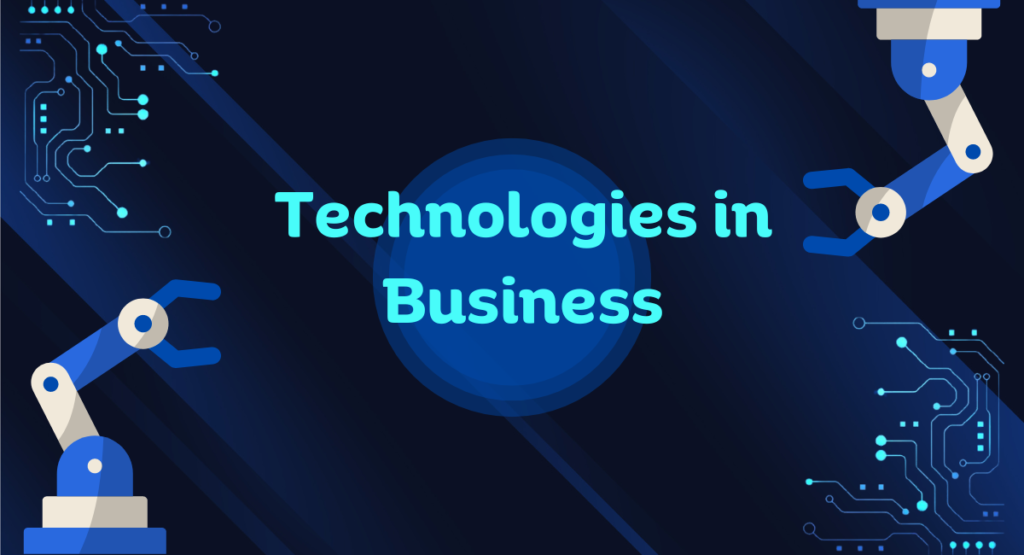Technology advancements are accelerating at a remarkable pace. Businesses must remain informed of the technology that is accessible to them and understand how it may modify their sales, overhead costs, and marketing strategy. Technologies such as artificial intelligence (AI), cloud computing, virtual reality (VR) and analytics are making it possible for companies to better manage their day-to-day operations as well as plan effectively for the future. However, while they may provide a range of advantages to business owners and employees alike, new technologies also come with some potential drawbacks that should be taken into consideration before investing in them.
This brief note will discuss all about the advantages and disadvantages of new technologies in business.
Advantages of New Technologies in Business
Increased Efficiency:
Leveraging the power of new technology can be incredibly beneficial for businesses. Automating mundane tasks, improving operational efficiency and streamlining processes all contribute to increased productivity and cost savings. AI-powered algorithms are an invaluable tool that allow companies to save time on repetitive activities in order to focus their attention on more complicated jobs which require human input. Utilizing these technological advancements offers businesses a clear advantage over competitors who don’t use them.
Improved Data Analysis:
Businesses must be equipped with the latest data to make intelligent decisions. Big Data and analytics are now enabling companies to gain a vast amount of knowledge in an instant, becoming more knowledgeable on customers’ behavior towards their product or services. With this powerful insight, businesses can identify patterns, trends and correlations that would have been impossible to detect without these technologies; allowing them to devise strategic strategies which will result in increased success across all areas of the business.
Improved Customer Experience:
Utilizing the latest advancements in technology, businesses can gain a competitive advantage when it comes to customer service. These new technologies allow companies to answer queries and resolve issues expeditiously while gaining insight into their customers’ expectations through AI-driven analytics. With this newfound knowledge, businesses are able to anticipate customer behavior more effectively which ultimately leads to an improved level of satisfaction among consumers.
Free and Reliable Communication:
New technologies enable businesses to communicate freely and reliably at any time of the day. Cloud-based solutions are a great example of this, providing access to data from anywhere in the world with just an internet connection. This makes it possible for companies to remain connected with customers and employees without the need for costly and time-consuming face-to- face meetings.
Accounting Management:

Digitalization of business operations and automation of accounting processes is made possible by leveraging the latest technologies. Automation can streamline mundane activities like accounts receivable, invoice generation, and payroll processing – helping businesses save time and money while eliminating human errors. With access to accurate financial data anytime, anywhere they desire it; companies are now empowered to make wiser decisions with confidence.
Convenient For Employees:
New technologies offer employees a convenient way to access the tools they need to get their jobs done. Mobile workers no longer need to worry about being tethered to their desks; thanks to wireless internet access and cloud storage, they are able to gain access and utilize company resources, programs, and information while on the go! Many mobile workers have found that a smartphone with just several downloaded apps is all that’s needed for securely protecting business data as well as streamlining various processes.
Drawbacks of New Technologies in Business
High Investment Costs:
With the latest technologies come high costs that can sometimes put a strain on businesses’ financial resources. Investing in new hardware, software and training can quickly add up to a hefty sum which may not always be feasible for smaller companies or startups. There is always a risk of the technology becoming obsolete in a relatively short period of time, which could result in financial losses.
Security Risks:

Embracing cutting-edge technology can bring with it some unfortunate security risks. It’s essential to comprehend the security of the new tech and its ability to protect data from third party intrusion or tampering. Companies should always be mindful of potential cyberattacks, malware, as well as other malicious acts that could occur when implementing modern technology.
Places Pressure on Employees:
The adoption of new technologies can also place pressure on employees as they are expected to quickly adapt and integrate these advancements into their workflow. Despite the potential need for more training, a lack of resources and hectic workloads might prevent some employees from developing relevant skills. As a result, morale may falter dangerously as dissatisfaction takes hold among staff members; this in turn leads to dropping productivity levels that can be difficult to recover from.
Operational Disruptions:
This can occur when companies struggle to effectively incorporate new technologies into their systems. When things don’t go according to plan, small and large businesses alike can face disruptions in their day-to-day operations that can result in financial losses. Companies should always approach new technology with caution and plan ahead in order to avoid any potential pitfalls.
Increased Risk of Job Cuts:
One of the risks includes a potential reduction in staff, as automation and digitalization can reduce the need for manual labor. Companies should be aware of the repercussions that new technologies could bring, such as job losses, before implementing them in the workplace. This change can create a difficult situation for affected employees and their families which is why it’s important to think about how this transition will take place.
Conclusion:
New technologies within the business will bring numerous advantages, but there are also risks that businesses should consider before investing in them. Companies must weigh the potential benefits with the costs and potential downsides to ensure they make informed decisions. A deep understanding of the risks associated with new technologies can help companies be better prepared for them and achieve a cost-effective optimization of their investments. By investing time in accurate examination and planning, businesses can successfully incorporate cutting-edge technology that will significantly enhance their operations.

